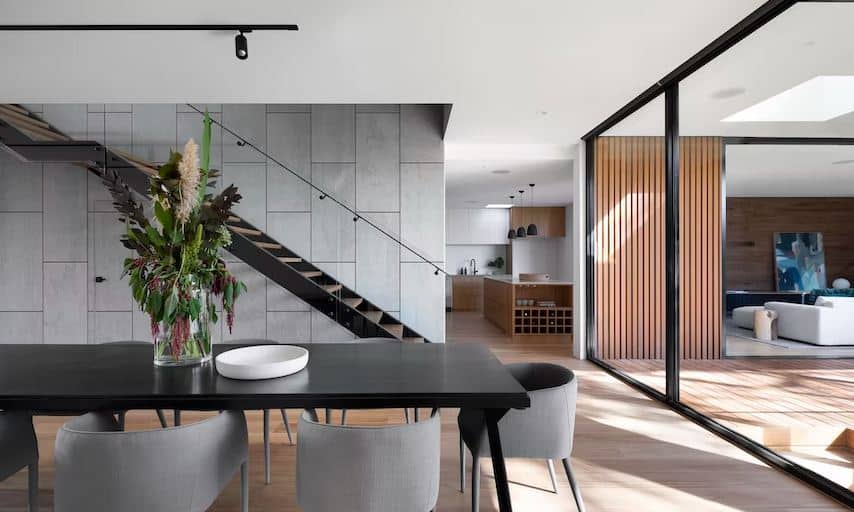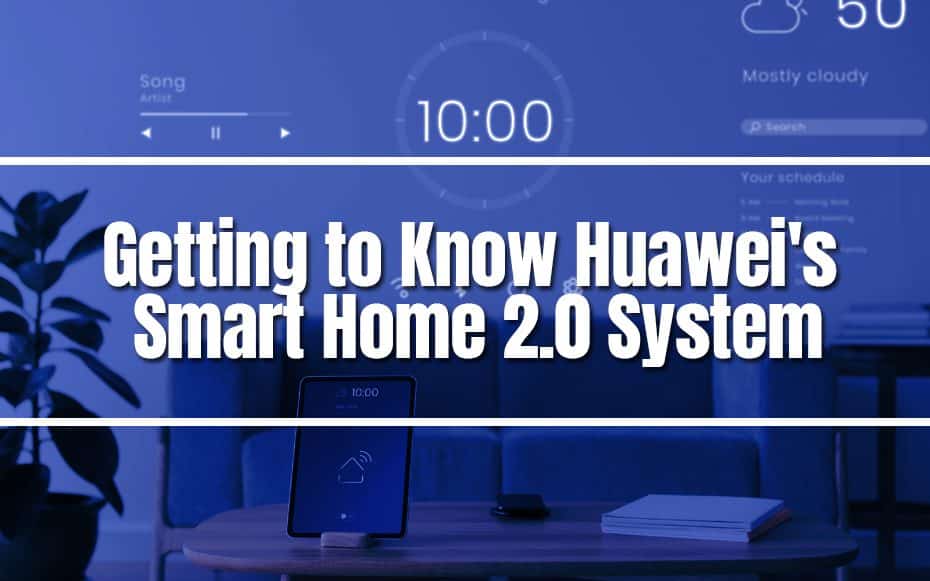Home automation is becoming increasingly popular. More and more people are going for the convenient and luxurious lifestyle they provide. Life is stressful, so they want to be as relaxed as possible while at home.
Several companies have invested in smart homes. One is Huawei, a Chinese company supplying ICT infrastructure and smart devices globally. As smart home tech quickly advances, companies like Huawei have to do their best so the gap between them and their rivals will not widen. Or ideally, they want it to widen, but in their favor.

So, it’s raining new smart home technologies. Companies that were trying to one-up each other kept launching new products. One of Huawei’s most significant launches is the Whole Smart Home 2.0.
Huawei teased the product last June, saying they would launch the Smart Home 2.0 in the summer of this year. It just released the previous version in March.
Huawei described the Smart Home product as the Ai center of the home. Furthermore, the company says it realized a broad cross-system management in the home. It also says that the Huawei Smart Home has over 1900 partners. Moreover, it has north of “4500 items to build a broadly integrated HarmonyOS Connect ecology.”
During the announcement, Huawei also revealed its plans to build 500 stores nationwide within the year. It says the goal is to make smart devices for the home available at a touch for everybody.
Huawei’s Smart Home uses an intelligent central control system with six main controls. The said controls are for sunshade, lighting, scene, floor heating, fresh air, and air conditioning. The AI actively judges the environment at different times of the day. Then, it allocates suitable home environment settings for users based on its judgment.
The previous generation of Huawei Smart Home would cost you at least $5,971.85 to outfit a typical apartment with devices. That’s for 2 rooms and a living room.
Huawei Whole Smart Home 2.0
People liked the previous generation of Huawei Smart Home. Naturally, they were excited about version 2.0. July 4 came, and the company launched the product.
According to reports, Huawei Whole Smart Home 2.0 is innovative. For starters, it adds a revamped desktop central control screen. This screen is mountable on a wall and can sit on top of desks and tables. Also, the Whole Smart Home 2.0 features a threefold structure that allows you to easily fit it in the space.
That’s only one of its features. Let’s have a closer look to see the many things this redesign brings to Huawei’s consumers.
New Lighting and Shading System
Huawei has added improvements to the interaction logic of its smart gadgets. In turn, the new Huawei Whole Smart Home 2.0 now supports different lighting modes. Also, it now allows you to group lights and control them in groups.

Likewise, Huawei Whole Smart Home 2.0 now supports grouping control of gauze curtains. It also allows you to finely control the closing and opening by up to 1%.
Cooling and Heating Fresh Air System
The new version also improved the cooling and heating fresh air system. It added automatic sensors that sense the area’s environmental qualities and automatically suggest purification.
Here’s another exciting thing. Huawei has upped its game in the voice control department. The Whole Smart Home 2.0 has improved voice control and super fast control.
Rear Mounted Smart Host
Huawei Whole Smart Home 2.0 features a rear-mounted smart host. That makes it versatile when it comes to placement; it is applicable to many apartment types.
The backbone network of the redesign adopts a wired adoption. Then, the smart home and the sub-routers adopt a wired connection through network cables or power lines. So you would never experience a weak signal, even if the house has thick walls. But please note that wireless network access is limited to the local space.
Ease of Installation
Huawei Whole Smart Home 2.0 also supports one-stop purchase as well as quick assembly. Additionally, it supports one-click batch network distribution, one-click scene configuration, and one-touch delivery. Therefore, it is not a hassle to set up.
Price
According to the announcement, Huawei Whole Smart Home 2.0 would cost:
- An estimate of $2,985 for an establishment of about 80 square meters, with 2 rooms and 2 halls.
- $5,971 or more for an establishment 120 square meters and above, with 3 rooms and 2 halls.
Pushing HarmonyOS to Smart Home was Forced
Last year, Huawei announced a strategy to attract more partners in the smart home sector for HarmonyOS. Analysts believe this move was forced, considering the tech war between Washington and China.
Huawei says it created HarmonyOS, a smart terminal operating system, for the era of the Internet of Things (IoT). “HarmonyOS provides a unified language for the intelligence, interconnection, and collaboration of different devices.”
The Chinese tech company unveiled its big plans at the HarmonyOS Connect Partner Summit held in Shanghai last year. The plan is to combine Huawei HiLink and Powered by HarmonyOS.
Huawei’s HarmonyOS Connect stands for the ‘N’ in its 1 + 8 + N strategy. It represents the brand of smart home devices working with the company. Analysts say it is a self-rescue effort to diversify Huawei’s business operations.
Ma Jihua, a veteran industry analyst, says that Huawei’s smartphone shares are sinking due to challenges amid US bans. So, it is emphasizing smart homes to attract third-party partners to expand the use of HarmonyOS. In other words, Huawei was forced to do this move.

Whether HarmonyOS would stay is also a big question mark. Huawei is losing to fellow Chinese smartphone manufacturer Xiaomi. The latter beats Huawei in sales both locally and internationally.
It’s important to note that Xiaomi uses Google’s Android OS. Given Android’s popularity, it’s likely to remain the dominant OS in the IoT era. So, it becomes even more challenging for Huawei to attract partners.
But only time could tell about the fate of Huawei’s smart home. If it can overcome the challenges, people – at least in China – would not have one less option for their smart home. It’s always nice to have a variety of options.
